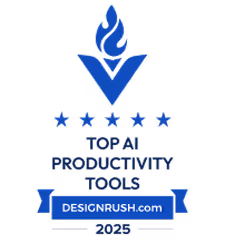Supply Chain
AI in Logistics: Reducing Cost-to-Serve with Conversational Analytics

Supply chain leaders face mounting pressure to cut costs while maintaining service levels. With global logistics expenses exceeding $350 billion annually and rising complexity driving costs higher, traditional analytics approaches can't keep pace with the need for real-time insights. The solution lies in conversational analytics, a breakthrough technology that transforms how logistics teams access and act on their data.
This article explores how AI-powered conversational analytics is revolutionizing cost-to-serve analysis in logistics, delivering measurable reductions in operational expenses while accelerating decision-making from days to seconds.
What Does Cost-to-Serve Really Mean in Modern Logistics?
Cost-to-serve represents the true expense of delivering products or services to specific customers, encompassing every touchpoint from procurement through final delivery. Unlike traditional cost accounting that averages expenses across all customers, cost-to-serve analysis reveals which customers, products, or orders actually generate profit, and which create losses.
Research shows that up to 10% of orders operate at a loss once all logistics costs are factored in. These hidden unprofitable transactions drain resources and mask opportunities for improvement. Cost-to-serve analysis includes transportation costs, warehouse operations, inventory holding expenses, order processing fees, customer service resources, and last-mile delivery charges.
The challenge lies in accessing this granular cost data quickly enough to make actionable decisions. Traditional methods require days or weeks to compile reports, by which time market conditions have changed and opportunities have passed.
Why Traditional Analytics Create a Data Bottleneck
Most logistics organizations suffer from what experts call the "data bottleneck", a situation where demand for insights far exceeds the ability to produce them. Business teams submit requests to data analysts, who manually extract information from multiple systems, create custom reports, and deliver findings days later.
Operations managers struggle to get answers to urgent questions about inventory levels, procurement teams wait weeks for vendor performance analysis, and supply chain directors make decisions based on outdated information. Meanwhile, data teams become overwhelmed with routine requests that prevent them from working on strategic initiatives.
The root cause isn't lack of data, it's the complexity of accessing and analyzing information across disconnected systems. Enterprise resource planning (ERP) systems, warehouse management systems (WMS), customer relationship management (CRM) platforms, and transportation management systems (TMS) all contain pieces of the cost puzzle, but integration requires technical expertise most business users don't possess.
How Conversational Analytics Transforms Logistics Decision-Making
Conversational analytics represents a fundamental shift from traditional business intelligence tools to natural language interfaces that understand human questions and generate insights automatically. Instead of navigating complex dashboards or waiting for custom reports, users simply ask questions in plain English and receive immediate answers with supporting data visualizations.
Lumi AI leads this transformation with its enterprise analytics platform designed specifically for logistics and supply chain operations. The platform's agentic workflows break down complex questions into manageable tasks, retrieve relevant context from integrated systems, generate appropriate code (SQL or Python), and execute analysis, all within seconds.
This approach delivers several critical advantages over traditional methods. Users need zero technical skills to perform sophisticated analysis. The system connects directly to existing ERP systems including SAP, Oracle, and Microsoft Dynamics 365 without requiring data migration. All processing happens within the client's secure network, maintaining data privacy and compliance requirements.
Perhaps most importantly, conversational analytics democratizes data access across the organization. Supply chain planners can analyze inventory trends, procurement managers can compare vendor performance, and operations directors can identify cost reduction opportunities, all without submitting IT tickets or waiting for analyst availability.
The Quantified Impact: Real Numbers from Real Deployments
Early adopters of conversational analytics in logistics report dramatic improvements in both speed and cost efficiency. The most striking metric involves time reduction: analyses that previously required 7+ days of manual work now complete in under 30 seconds.
One F10 retailer used Lumi AI to address on-shelf availability issues. The traditional process involved manually exporting data from centralized dashboards, submitting requests to data teams for custom analysis, consolidating information in spreadsheets, and generating reports identifying non-compliant stores. This workflow consumed over a week of analyst time per analysis.
With conversational analytics, the same retail operations team simply asked: "Generate a list of stores not following inventory protocols." The AI system immediately identified stores that missed wall-to-wall inventory scans and had below-average in-stock rates. This faster analysis enabled quicker corrective action, recovering approximately 12% of lost sales previously attributed to stockouts.
Procurement Optimization: Finding Hidden Savings Opportunities
Procurement represents one of the largest opportunities for cost reduction through conversational analytics. Traditional vendor analysis requires weeks of data compilation across multiple systems and categories. Conversational analytics enables immediate comparison of supplier performance, pricing trends, and consolidation opportunities.
This type of analysis traditionally requires procurement analysts to manually extract data from ERP systems, normalize pricing across different suppliers, account for volume discounts and contract terms, and create complex spreadsheets. The entire process might take weeks and often becomes outdated before completion. Conversational analytics delivers the same insights instantly, enabling procurement teams to act on opportunities while they're still relevant.
Each analysis that previously required days of manual work now completes in seconds, allowing procurement teams to focus on strategic supplier relationships rather than data gathering.
Inventory Management: Eliminating Excess While Preventing Stockouts
Inventory optimization presents a classic logistics challenge: maintain adequate stock to meet demand without tying up excessive working capital in slow-moving items. Traditional approaches rely on periodic reports and manual analysis that often miss real-time opportunities for improvement.
Conversational analytics enables continuous inventory optimization through natural language queries. Operations managers can ask questions like "Which items have minimum order quantities exceeding 12-week sales?" or "Show me products with high days-on-hand and declining velocity." The system immediately identifies specific SKUs requiring attention, calculates potential savings from inventory reduction, and recommends action steps.
Safety stock optimization represents another major opportunity. Many companies carry excessive safety inventory because they lack real-time visibility into demand patterns and supply chain performance. Conversational analytics can continuously monitor consumption rates, supplier reliability metrics, and lead time variations to optimize safety stock levels by SKU and location.
Exception Reporting
Perhaps the most valuable application of conversational analytics involves pinpointing the most critical offenders and problem areas that drive disproportionate costs across logistics operations. Traditional approaches rely on periodic reports that treat all exceptions equally, while conversational analytics enables immediate identification of the highest-impact issues requiring urgent attention.
Supply chain exceptions include stockout risks, supplier delivery delays, quality issues, demand spikes, capacity constraints, and regulatory compliance problems. Each exception that goes unnoticed can result in lost sales, expedited shipping charges, premium supplier rates, or customer dissatisfaction. Early identification and resolution prevent minor issues from becoming major cost drivers.
Quality exception management becomes more effective when conversational analytics monitors customer complaints, return rates, supplier quality metrics, and inspection results across all products and locations. The system can identify quality trends that might indicate supplier issues, process problems, or product defects before they result in recalls or customer dissatisfaction.
Implementation Strategy: Getting Started with Conversational Analytics
Successful implementation of conversational analytics requires a phased approach that delivers quick wins while building organizational confidence in the technology. The most effective strategy starts with high-impact use cases that solve immediate pain points and demonstrate clear ROI.
Phase 1: Choose a Specific Use Case
Begin by selecting one high-impact functional area that addresses an urgent business need. The most successful implementations start with focused use cases like inventory optimization, procurement vendor analysis, or exception reporting. This targeted approach delivers quick wins while building organizational confidence in conversational analytics.
During this phase, organizations connect relevant data sources, configure business definitions and KPIs, and deploy the system to a small group of power users. These early adopters validate the technology while solving real business problems and generating quantifiable results that demonstrate ROI to stakeholders.
Lumi AI's pilot program provides structured onboarding with minimal client effort required. The process includes pilot scope alignment sessions, white-glove setup requiring less than three hours of client IT involvement, user training sessions, and dedicated support throughout the pilot period. Time from project start to delivering actionable insights typically spans one week.
Phase 2: Expanding the Rollout
After proving value with your initial use case, expand conversational analytics across additional departments and data sources. Organizations typically scale from their pilot area to comprehensive supply chain analytics, progressively adding warehouse operations, sales analysis, transportation management, and manufacturing insights.
The proven blueprint from Phase 1 accelerates deployment across new functional areas. Use the same integration patterns, leverage lessons learned about user adoption, and apply best practices discovered during the pilot. This methodical expansion approach ensures each new department benefits from previous successes while maintaining momentum and demonstrating continuous value delivery.
Lumi AI vs. Traditional Analytics Solutions: A Clear Comparison
The comparison reveals significant advantages of conversational analytics over traditional approaches. Setup time drops from months to days, technical skill requirements disappear entirely, and cost per insight decreases dramatically. Most importantly, the natural language interface democratizes analytics access across the organization.
Traditional BI tools require extensive customization, technical training, and ongoing maintenance by skilled developers. Users must learn complex interfaces, understand data relationships, and interpret dashboard visualizations. Even simple questions often require IT support or analyst involvement.
Basic AI tools offer some automation but typically lack the business context integration and enterprise security requirements for logistics operations. They may provide generic insights but cannot understand industry-specific terminology or complex supply chain relationships.
Lumi AI combines the sophistication of enterprise BI with the simplicity of natural language interaction. The platform understands logistics business context, integrates with existing enterprise systems, and maintains security standards required for sensitive operational data.
Getting Started: Your Path to AI-Powered Cost Reduction
Start your AI-powered cost reduction journey by identifying high-impact use cases like inventory optimization or vendor analysis, then implementing through a risk-free pilot program that demonstrates measurable ROI within weeks. Success requires focusing on practical applications and building a self-service analytics culture across your organization.
Ready to reduce your logistics costs? Schedule a demo with Lumi AI today to see how conversational analytics can transform your supply chain operations with your own data.
Frequently Asked Questions
How quickly can we see ROI from conversational analytics?
Organizations typically see immediate time savings from day one of implementation, with quantifiable ROI within weeks. The Lumi AI pilot program is designed to demonstrate clear value within the first week through targeted use cases that solve existing pain points. Long-term ROI includes reduced analyst workload, faster decision-making, and cost optimization opportunities that compound over time. Start small, prove value, scale across.
What data sources can Lumi AI connect to?
Lumi AI integrates with all major enterprise systems including SAP, Oracle, Microsoft Dynamics 365, Snowflake, Amazon Redshift, and hundreds of other databases and applications. The platform uses standard connectors that maintain data security while enabling real-time analysis. All data processing occurs within your secure network environment.
Do we need technical expertise to use conversational analytics?
No technical skills are required for end users. Business teams can ask questions in natural language and receive immediate insights without understanding SQL, Python, or database structures. The AI agents handle all technical aspects of data retrieval and analysis. However, initial setup does require some IT involvement to establish secure connections and configure business definitions.
How does Lumi AI ensure data security?
Lumi AI processes all data within your secure network environment using encrypted connections and enterprise-grade security protocols. The platform is SOC 2 compliant and meets industry standards for data privacy and protection. No sensitive data leaves your network, and all queries are executed locally on your systems with results returned through secure channels.
Can conversational AI integrate with our existing ERP system?
Yes, Lumi AI includes pre-built connectors for SAP, Oracle, Microsoft Dynamics 365, and other major ERP systems. Integration typically requires less than three hours of IT effort and maintains existing security protocols. The platform can connect to multiple data sources simultaneously, providing unified analysis across your entire technology stack without requiring data migration or system changes.
Related articles
The New Standard for Enterprise Analytics
Make Better, Faster Decisions.




